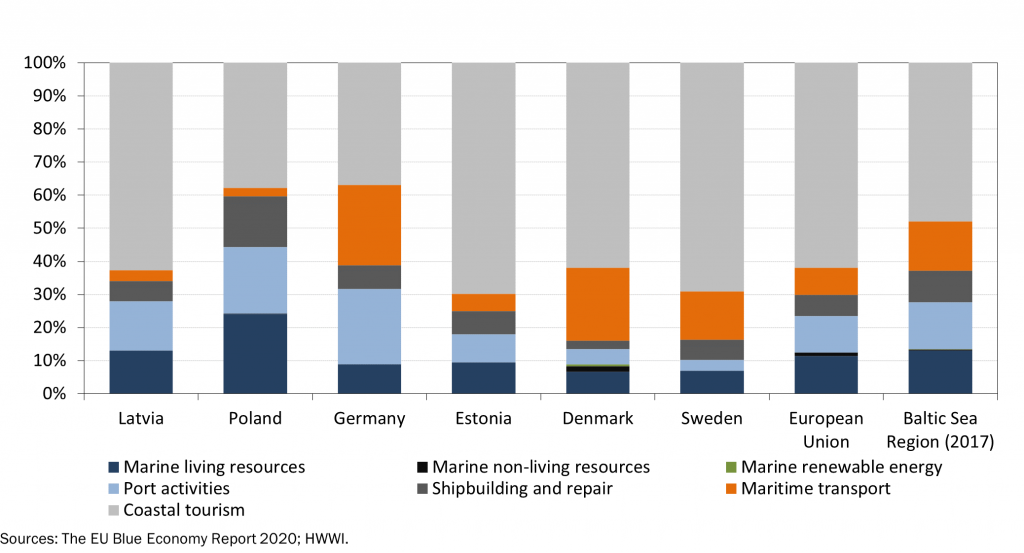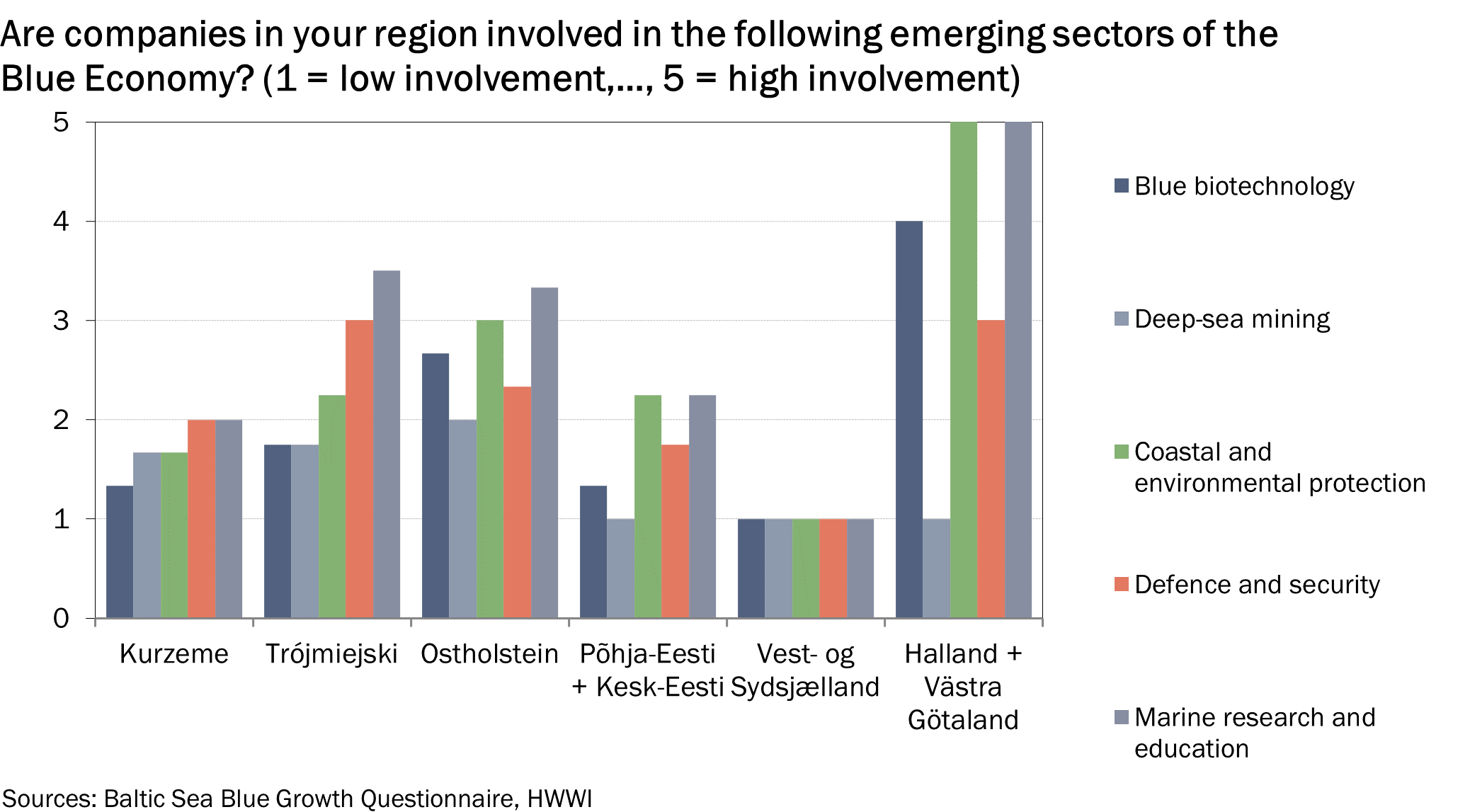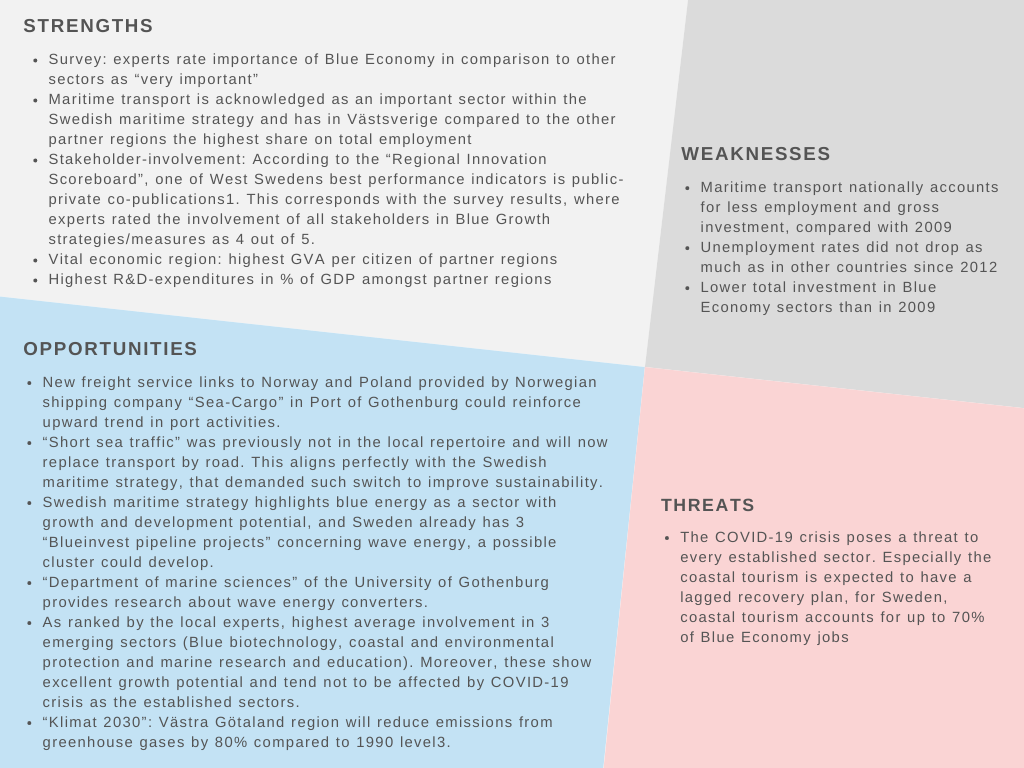Blue Growth Checks: Potentials for prosperous regional Blue Economies
The Blue Growth Checks report aims to map the current state of the Blue Economy and future growth potentials in the Land-Sea-Act project case study regions. As the Blue Economy still is a relatively new concept, data availability proved to be problematic, especially on the regional and local level. Therefore, the analysis was complemented by an expert survey among local stakeholders. The results were collected and analysed by the Hamburg Institute of International Economics (Hamburgisches WeltWirtschaftsInstitut, HWWI).
National employment in Blue Economy sectors is distributed heterogeneously among the partner countries. In general, the Baltic Sea Region shows a more diverse distribution of jobs across the sectors than the EU, with fewer jobs located in the most important Blue Economy sector, coastal tourism. Among the partner countries, Poland and Germany show a comparatively low number of jobs in coastal tourism, but higher involvement in port activities. Estonia and Latvia have similar profiles with a strong focus on tourism. In Denmark and Sweden, maritime transport is above EU average.

Figure 1: Blue Economy jobs, share by sector, 2018
Apart from these “established sectors”, the rise of the “emerging sectors” is a central issue for the future development of the Blue Economy. Emerging sectors are sectors that are not necessarily new but show excellent growth potential. As data on these sectors is rare, local experts were asked about their regions’ involvement in these industries in the survey. Replies varied a lot between the regions. While Danish experts rated involvement low across the board, Polish, German and Swedish experts acknowledged considerable involvement in specific sectors such as marine research and education.

Figure 2: Involvement in emerging sectors
These results indicate how different the Blue Economy profiles in each partner region are. Moreover, the landscape of stakeholders, as well as legal and political preconditions, differ strongly between the regions. Accounting for these differences and finding a suitable specialisation niche for sustainable Blue growth is one of the key challenges for successful maritime planning.
In a final step, strengths, weaknesses, opportunities and threats were identified for each case study region in a SWOT-analysis based on the findings on national and regional Blue Economy data results from the survey and information on local developments. As an example, for the Swedish region Västsverige strong R&D-expenditures, local research in marine sciences and three registered projects from the “Blueinvest Platform” pointed at the possibility of a developing cluster in wave energy.

Figure 3: SWOT-matrix for Västsverige, Sweden
The Blue Growth Checks report will be available soon.
Prepared by Andreas Lagemann (Hamburg Institute of International Economics/Hamburgisches WeltWirtschaftsInstitut, HWWI) /March 2021/

